QuestionMy rabbit is a male Holland Lop about 8-9 months. This problem started this month. He starts my bitting and pulling his water bottle, almost like he's wrestling it and only will he start drinking it. He goes through 2-3 water bottles a day! And he also has a problem with food because he is always hungry and whenever we give him his pellet food he acts like he has never ate food before. He is so aggressive and it seems like only I can calm him down by petting him. Tomorrow he is getting spayed so that may change things but from what I read it seems like he has a kidney problem but isn't he too young? We went online and got a paper with proper diet which is pellet food, hay, and sometimes "treats" like fruit and veggies. I would not call him fat or overweight because he looks like he's healthy and he plays outside for about 10-15 mins everyday. And one last thing is that his urin is mostly the time white or clear. Please help.
AnswerHi Liza
My doe bites at her water bottle too and I've seen my other rabbits through the years doing this as well. I think they either get frustrated with their water bottle and bite it to start it up. I've noticed that she does it more if the bottle is hanging on an angle. I don't think it works properly unless it is sitting straight up.
Is there a leak in the bottle? Sometimes when rabbits start doing this the mechanism at the base where they drink from will dislodge almost and the bottle will start dripping. Sometimes it will be almost a consistent drip. What size is the water bottle? I'm just trying to draw a comparison by what I see mine drink a day in comparison to yours. I have a mom and one baby in one pen and they finish a large bottle a day and my other male will drink most of his medium sized bottle in a day. If there is a drip, as there has been in the past, then I would be filling it twice throughout the day.
When you put new bedding down (or change the litter box) how long does it take before it's urine soaked? two to three days would be ok, but if it's every day then I would suggest consulting a vet. This is the most accurate way to determine how much he is actually taking in. Change his bedding and layer paper towel along the bottom. It is easier to distinguish the color and amount so long as he doesn't eat it.
Clear urine is considered normal and white urine occasionally is ok. If it is cloudy or gritty, or becomes grayish to brown with 'sand' in the urine, then this would be cause enough for concern to go see your vet. Urinary sludge is a sign of kidney failure, bladder disease or kidney / bladder stones which rabbits are prone to. Rabbits excrete calcium through their urine and this condition is caused by too much calcium. Avoid alfalfa and stick to timothy hay because it can have a high calcium content. Read the labels of other treats and also avoid yogurt drops. If there is already a pre-disposition to these problems, then prevention will be your biggest ally.
Now, has his drinking habits changed in the past few months since he was considered full grown. This isn't going to be totally accurate because those months have also fallen over the summer months so he is naturally going to be drinking more on hot days. It is also recommended to encourage more fluid intake to flush the kidneys. adding a tablespoon of carrot juice to a bowl or apple juice is ok and him flushing out his system is ok too. It will help pass any possible stones or crystals in the urinary tract.
Age can be a factor with kidney issues because as rabbits age, they become more prone to these problems, however, they can occur at any stage in life. My one little rabbit going through this is only 6 weeks old. I mention her more below.
Another thing to note is whether he is straining to urinate. This sometimes can best be observed out of the cage when she's running around. I have one rabbit who strains to urinate who is undergoing treatment for rabbit syphilis and hutch burn. when she strains she is literally pushing down on her lower abdomen and you can see her doing it. Rabbits mostly, should only lift their tail to pee. Another indication of strain is when you see the urine shoot straight out behind the rabbit, rather than just creating a puddle. Straining can be indicative of kidney problems or stones.
It is recommended that you feed more greens and hay and limit the pellet intake. It is more natural for them since they eat greens, grass and hay exclusively in the wild.
Rabbit.org has an excellent dietary page along with everything you need to know in one place. It also has rabbit vet listings for vets who specialize in rabbits listed throughout the US, Canada and beyond. I always recommend finding a rabbit savvy vet because those that treat them only in emergencies will often treat the rabbit as a cat or dog which is totally inappropriate. An antibiotic that can be given to dogs or cats can be fatal to rabbits and this has happened too many times when we think we're doing a good thing by getting them seen by a vet.
The aggressiveness can be linked or could be a separate issue. If she is in pain in any way, then she may be reluctant to be lifted. If she has stones then this can be painful for her. When you take her to the vet for her spaying, then have them check her over. They will feel for any lumps or stones. Sometimes with spaying, it takes about a month to two before she really settles down. The hormonal fluctuation right after spaying can sometimes make her worse before she gets better (aggression-wise) Especially at first with new stitches etc she really will want to be left alone at first.
Here is a video on the aggressive rabbit and how to improve this. It's on youtube.
http://www.youtube.com/watch?v=HxV0j7SwBbk
I hope this helps and I would get her examined when you take her in for her spay. Note any different behaviors or changed habits as these can sometimes be indicative of problems as well.
Alice
There is some reference material below for your information.
"URINE
Rabbit urine can vary in color from clear to yellow to brown to red, generally due to dietary variants.
When Is There Cause For Alarm? If you are in doubt, especially about red urine, contact your vet to have the bunny seen and/or urine tested. Milky urine --occasionally--- is normal, but if this occurs frequently, for long periods of time, or if urine is thick and sludgy, vet intervention is warranted. This is generally a sign that there is too much calcium in your rabbits diet, but before making any changes it is important to consult your rabbit vet."
http://www.mybunny.org/info/health.htm
Excess calcium is excreted through the urine in the form of calcium carbonate. This excess calcium is what causes a rabbit's urine to sometimes dry white and chalky. Generally, white chalky urine residue is not a problem, and does not indicate sludge. True sludge causes darker, grayish, thick and gritty residue. It is not clear why some rabbits develop sludge while others do not. For rabbits prone to sludge and stones, it may be beneficial to reduce dietary calcium, although dietary calcium is just one factor that might lead to sludge and stones. Genetics, water intake and infrequent urination, among other things, also can lead to this condition.
Read more: My Rabbits urine is white is that to be concerned about? | Answerbag http://www.answerbag.com/q_view/512717#ixzz1XShRwjlm
Bladder Disease and Bladder Stones in the Rabbit
Sue A. Kestenman, DVM
Donate now through Network for Good
email article
print article
Related Articles
Forthcoming...
Early Signs
An observant person can often detect bladder disease in their rabbit before he becomes lethargic, anorectic, or is in a life-threatening situation. Signs of early trouble will vary with each rabbit, but you should seek veterinary help when any of the following occur: Loss of litterbox habits, straining to urinate, hopping in and out of the litter pan, wetness around the genital area or chronic skin irritation in that area from urine scalding, semi-solid (like toothpaste) urine, or blood in the urine. Blood in the urine must be confirmed with a veterinary urinalysis or microscopic exam, or by a urine "dipstick" which can be purchased over-the counter from a pharmacy. Many people mistake porphyrinuria (the presence of orange-to-red colored by-products in rabbit urine that result from chlorophyll and other vegetable component break-down) for blood in the urine.
The kidney's serve as the body's filtration system -- to discard waste products, to conserve normal levels of electrolytes within the body, and to regulate water balance. To accomplish this, incoming blood is juxtaposed with a network of fine tubules, across which filtration occurs. The delicate tissues within the kidneys are ideally suited to filtering soluble substances --ions, glucose, proteins. But once the kidneys have reached their (limited) capacity for reabsorption, calcium precipitates within the urine, and is excreted as insoluble crystalline salts. This is what is in that cloudy white urine ("sludge"), or gritty puddles that you may have cleaned. It has been theorized -- not proven yet -- that the red pigment often seen in rabbit urine, although not blood, is a blood pigment indicating damage to the kidneys' tubules, most likely by calcium salts. Some feel that "red urine" is caused by harmless plant pigments, and is in no way a problem.
We do know that calcium stones are a significant problem for pet rabbits. These stones can be found anywhere within the urinary tract -- kidneys, ureters, bladder, urethra. Depending on their location, they can be painful and often require surgical removal. And they can be very difficult to remove. We also know that urinary excretion of calcium correlates directly with the level of calcium in the diet. In other words, the more calcium that the bunnies eat, the more their kidneys process and eliminate. Given the potentially serious, and all-too-common problems associated with calcium excess, it makes sense to provide no more calcium than what is needed for maintenance of skeletal and neuromuscular needs.
There are two standard sources for determining rabbits' nutritional requirements: the National Research Council (NRC, 1977) and Francois Lebas (Lebas, 1980), both referenced in Cheeke's _Rabbit Feeding and Nutrition_, 1987. The NRC did not determine the maintenance requirement for calcium, but sets 0.4% as the growth requirement; maintenance should be considerably less. Lebas determined the maintenance requirement to be 0.6%. Based on this data, current recommendations are for a calcium content of 0.4% to 0.6% (dry matter basis). Almost all of the commercial pellets currently available exceed this, some by almost double.
All of these pellets share a common trait -- they are formulated primarily from alfalfa meal. And alfalfa meal, like the alfalfa hay from which it is made, has a very high calcium content -- 1.5%. So it is a challenge to make a pellet that starts with alfalfa -- inherently high in calcium, and dilute the calcium content by 60%. There is really only one pellet that avoids this formulation dilemma. Oxbow Hay Company's Bunny Basics/T starts out with Timothy meal, not alfalfa meal, and thereby produces a pellet with 0.4-0.8% calcium.
The other potentially significant source of calcium in rabbits' diets is fresh greens. Although many people worry about the greens noted for high calcium content -- kale, spinach, collards -- I do not. All fresh greens are about 70% to 85% water, which greatly dilutes all nutrients. To eliminate the potential to misrepresent nutrient content due to variability in water content, it is essential to compare calcium content on a dry matter basis, which is how the nutrient requirements are expressed on labels and in tables. For example, kale, which many recommend avoiding by virtue of its calcium content, has 1.6% calcium on a dry weight basis. In other words, dehydrated kale has roughly three times the NRC recommended calcium content. However, the fresh bunch of kale is mostly water, so the calcium content drops dramatically, to 0.24% when fed fresh. If you were to feed a medium-sized (5 pound) bunny 1/4 cup (about 60 grams) of a pellet meeting NRC recommendations, he would consume about 0.30 grams of calcium. To obtain a similar quantity of calcium from kale, the bun would have to eat over 4 ounces (130 grams) of kale. That is a sizable pile of kale -- about as much as you could stuff in a half gallon milk carton. Similarly, dandelion greens, have a calcium level of 1.6% on a dry matter basis. But since our bunnies eat them fresh, they are only getting 0.20% calcium. Again, we see that even for greens with a relatively high calcium content, the calcium level of the leaves the bun is munching is actually quite low.
So, what does all this mean in real life? It mean's that to protect a rabbit's kidneys from calcium overload, we must minimize the calcium we feed them. Alfalfa -- both hay and alfalfa meal derived pellets -- is the biggest source of calcium overload for domestic bunnies. Minimizing the alfalfa in rabbits' diets will automatically reduce their calcium levels. While some veterinarians (notably, Dr. Susan Brown) may recommend eliminating pellets entirely from the house rabbit's diet, I do not. I think a balanced pellet, fed in limited quantities, can help even out the fluctuations inherent to hay -- soil content, day length, first cutting vs. second cutting, etc.
From my point of view, there is one preferred pellet -- Oxbow Bunny Basics/T. Oxbow has been the only manufacturer to date to realize that basing a pellet on Timothy hay just fundamentally makes more sense. Although there are a few alfalfa meal based pellets with a reasonably low calcium content, they do not have the fiber content of Bunny Basics/T (29%), so on the fiber count they don't stack up. I think Bunny Basics/T is the best thing to happen to bunnies since Farmer McGregor retired. Of course, good quality grass hay should be the bulk of your rabbit's diet, with fresh greens for variety, added fluids and vitamins. I believe that this combination of feeds offers the best available complete nutritional profile, as well as taking into account a rabbit's idiosyncratic calcium metabolism, and minimizing the risk of associated urinary tract disease.
http://www.bunnybunch.org/rabbitcare1.html

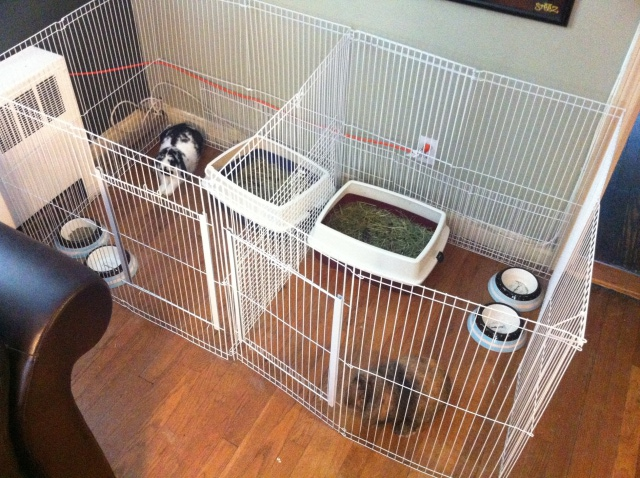 Attitude problems! (Photo attached)
Question
Rocko/Spunkys home
Hi, my name is Nicol
Attitude problems! (Photo attached)
Question
Rocko/Spunkys home
Hi, my name is Nicol
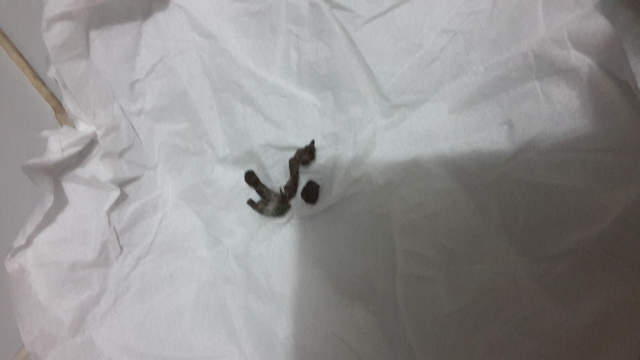 bunnys tummy looks so big and hard
QuestionQUESTION: Hai Cat,
I have a bunny is about 1 an
bunnys tummy looks so big and hard
QuestionQUESTION: Hai Cat,
I have a bunny is about 1 an
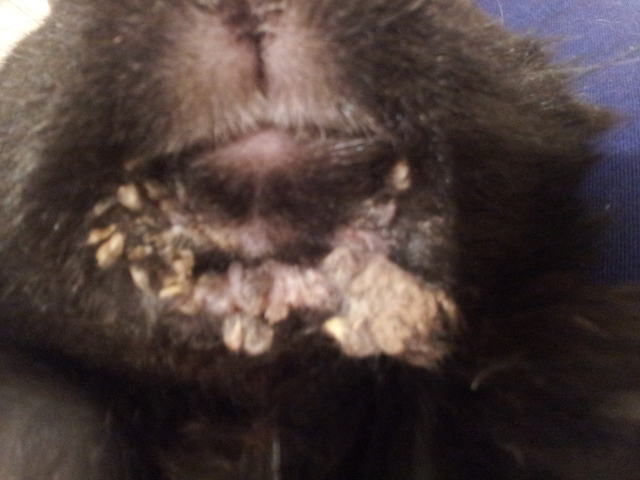 vet is stumped, ongoing scab under the chin
Question
Anyas chin
Hi my rescue bunny has had a
vet is stumped, ongoing scab under the chin
Question
Anyas chin
Hi my rescue bunny has had a
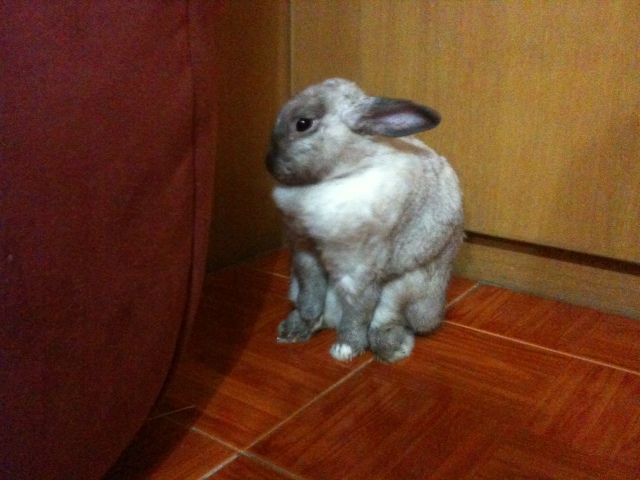 Rabbit lifting hand
QuestionQUESTION: Dear Dana,
Merry Christmas to you!
M
Rabbit lifting hand
QuestionQUESTION: Dear Dana,
Merry Christmas to you!
M
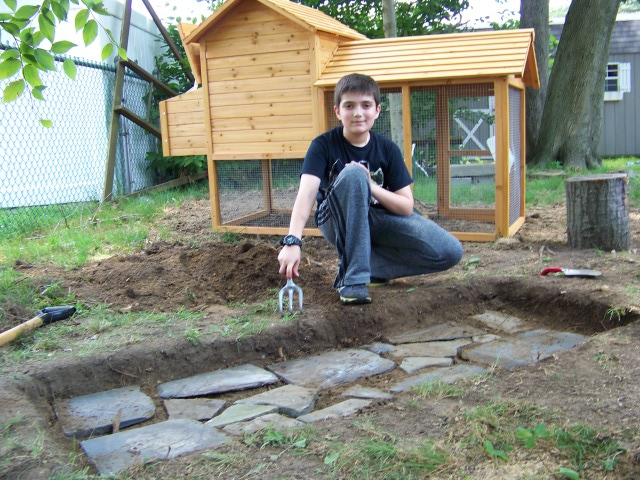 Litter pan training/use of bedding/digging?
Question
Bunny Hutch Base Finished Bunny Hutch &n
Litter pan training/use of bedding/digging?
Question
Bunny Hutch Base Finished Bunny Hutch &n